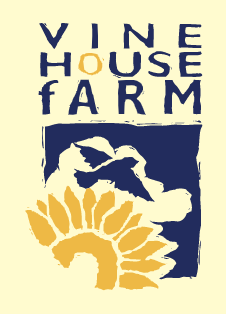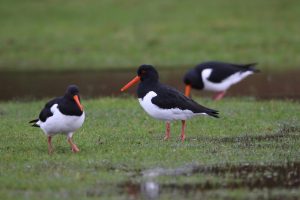
I am sure it is no surprise when I say it was a warmer and wetter December than usual. With 91mm falling, we’ve had just two wetter Decembers in the last 50 years and four warmer ones. We did have that unusually warm night on 23rd December, with a temperature of 13.5°C; that has happened twice before in 2015 and 2006. All three Decembers had one night that was two degrees above any other night in the month. Trawling through the records, we have only had one wetter October, November and December since 1829. In 1960, we had 11.6 ins or 294mm, this year we had 10.6 ins or 270mm – half of our yearly average rainfall. No doubt there are several readers who may have had 10 or 11 ins in one month this autumn; if so I would be interested to hear about it.

The only work to be done in the fields was lifting sugar beet, followed by the drilling of wheat afterwards. Elsewhere in the country, fodder beet would also have been lifted. The modern sugar beet harvesters are able to travel across the fields, even in these wet times – they don’t leave any ruts and the field is not slippery. As the harvester moves across the field, we plough and drill the wheat with the combination drill, which works the land and drills the wheat together.
Ideally, we need to have drilled all the land and finished the field by the end of the day. We were able to do that on both of the fields we lifted in December. If it were to rain after lifting and before ploughing, the field would be too slippery and we’d have to wait for drier times.
The beet harvester squeezes the beet out of the ground with two shares that are vibrating. There is very little soil moved, as the shares can move from side to side to keep in the row, if the steering arm of the 50-tonne harvester gets out of line. The potato harvester will not work in these wet conditions because the whole row of soil and potatoes must be lifted, and the potatoes can’t be sifted out of the wet soil.
The modern sugar beet harvester has a holding tank of over 20 tonnes, meaning the harvester weighs over 50 tonnes when it’s full and has a 4ft wide elevator able to unload in one minute. The tyres on the machine are also 4ft wide and only pumped up to 25 psi. As the harvester starts down the row, the back wheels of the harvester move to one side so they don’t run on the soil where the front wheels were.
A few years ago, when we had tractors and trailers running alongside the harvesters, the trailer tyres would be pumped up to 60 or 70 psi. As the tyre presses on the soil with the same pressure that it is inflated to, the sugar beet harvester, even though it might weigh 50 tonnes, should be doing far less damage to our soil than our tractors and trailers do. When the harvester gets to the end of the field, it deposits the beet on the headland or a tractor and trailer standing on the road.
We have been checking, and uncovering where necessary, our land drains; these are the pipes that have been laid across our fields. They should be flowing well, and it’s a lot easier to find them in a wet time, when they are flowing, than a dry time when they’re not in use.


I don’t suppose the wet autumn has affected much of our wildlife, except for our Barn and Tawny Owls. They don’t have waterproof feathers, so when it is raining, they sit in a dry place and watch for something moving that they can swallow whole. They don’t need waterproof feathers because they can’t hunt successfully when it is raining; the noise of the rain hides the noise of a small rodent moving around in the vegetation. The feathers of the Long and Short eared Owls may be partially waterproof, as they don’t roost in buildings or inside holes in trees. The Owls that are unable to find a building to sit in on a wet night are at a distinct disadvantage. We make sure that all our grain stores have a six inch square hole for Barn Owls to enter.
Fieldfares came in big numbers, we had up to 700- 800 on the farms earlier in December, but most have now moved on. They ate the hawthorn berries, leaving just enough for our resident birds. We have fewer Blackbirds in the Vine House Farm garden than usual, possibly because they are in the Café Wildlife Garden where we have planted many pyracanthas. They have eaten all those with orange berries and are now tucking into those with red berries.
We had a lot of Lapwings in the Fens during December. When doing my Wetland bird survey in mid-December on Holbeach Marsh, I saw a flock of over 10,000, quite spectacular! In the 54 years I have been counting waders on the Wash, I have never seen so many. Big numbers usually arrive in November, but due to our climate getting milder, they don’t get pushed across the North Sea as early. Some birds come as a habit, and some don’t come until they must – when there are a few sharp frosts and the food they eat is not available to them.
As I go around the farm feeding the birds each morning, I always see a few Buzzards, one or two Kites, a Marsh Harrier and this morning a Raven was honking away; numbers for all of them are on the increase. Ravens are quite vocal at this time of year, as they are proclaiming their territories. They could well be laying eggs in February, nearly two months before the Carrion Crows start nesting.
Deer are also on the increase, 15 years ago we saw our first Roe deer, now they are commonplace. Fallow deer have been visiting us for a few years, but they always left the Fens to go to the north of Bourne for the rut; now they reside here all year. They go about in herds, and all need to sit down to have a rest. As they don’t sit down in the same place very often, we can get quite a lot of laid crops. I hope their numbers don’t increase too much. Chinese water deer are also on the increase. There are many in Norfolk; I have seen one on Holbeach Marsh, but they haven’t reached our farm yet.
I am feeding less birds than I have been in other years. Maybe there are less birds around, but there are now more crops of wild bird cover available. These are crops of seed-bearing plants that the government pays us about £250/acre to grow; we have over 20 acres. Here in the Fens, farmers can earn about £300/acre from growing normal crops, so not many farmers grow wild bird cover. You could say that it’s not good business to grow them, but if you like caring for wildlife, you grow them.



